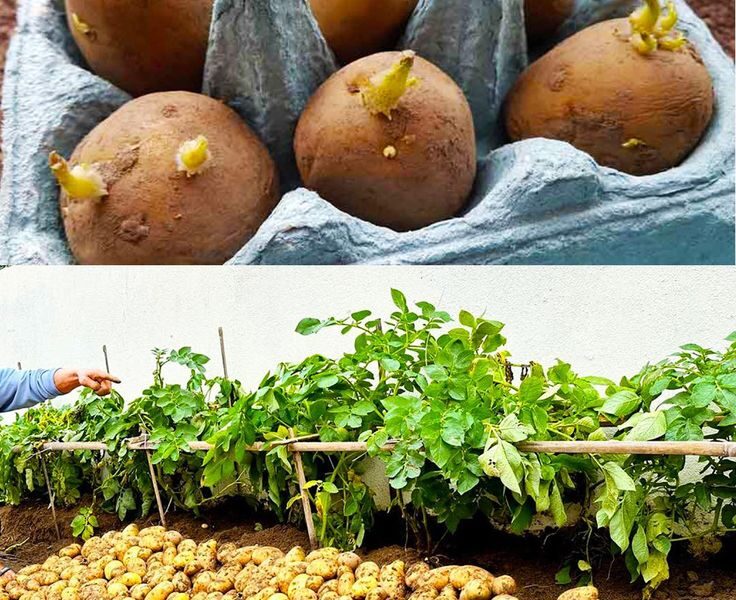The Ultimate Guide to Growing Your Own Potatoes
Growing potatoes in your own garden is an experience that combines horticultural skill with the simple pleasure of growing your own food. This guide will accompany you every step of the way, from selecting the right varieties to harvesting, ensuring you get a bountiful harvest of this much-loved root vegetable. 1. Choice of potato varieties The first step in your potato growing adventure is choosing the varieties suited to your region and culinary preferences. Potatoes come in a multitude of varieties, each offering its own texture, flavor and culinary use. Opt for an assortment for a diversity of tastes. Here are some varieties to consider: Chieftain: Reliable growing and deliciously flavorful, this versatile strain is a safe choice. Tara Rose: With its beautiful smaller tubers and fantastic flavor, this variety is a treat for the taste buds. French Fingerling: Appreciated by gourmets for its unique shape and taste, this variety is ideal for refined dishes. Russet Burbank: A classic choice for baking and frying, offering large, fluffy potatoes. Russian Banana: Ideal for mashed potatoes and salads, these little banana-shaped potatoes are a delight. Pontiac Rouge: Known for their productivity and versatility in the kitchen, Pontiac Rouges are a favorite among gardeners. 2. Soil preparation and planting Potatoes thrive in well-drained, slightly acidic soil, but they are surprisingly adaptable to a variety of soil types. For heavier clay soils, a lasagna gardening method can be particularly effective. This involves lightly loosening the soil and then applying a generous layer of organic mulch to improve soil structure and retain moisture. Choice of location: Opt for a sunny spot in your garden, providing at least 6 to 8 hours of direct sunlight per day. Spacing: Plant your potatoes about a foot apart in rows, allowing plenty of room for plant growth and easy harvesting. Planting Depth: Dig trenches approximately 4 to 5 inches deep and plant your potatoes in them to promote robust rooting. 3. Mulch and watering After planting, apply a thick layer of organic mulch around your potato plants to maintain soil moisture, reduce weeds and maintain a stable soil temperature. Water your plants regularly, especially during dry periods, to ensure consistent humidity. Although potatoes are relatively drought tolerant, regular watering promotes healthy growth. 4. Cultivation and maintenance Monitor the growth of your potato plants carefully and be sure to maintain mulch to keep the tubers covered. This prevents developing potatoes from being exposed to sunlight, which can turn them greenish and toxic. 5. Harvest Potatoes are ready to harvest when the foliage begins to yellow and wilt, usually 80 to 110 days after planting, depending on the variety. For new potatoes, you can harvest a few early tubers by gently exploring the soil with your hands, leaving the rest to continue to ripen. To harvest, carefully dig up the tubers with a fork or your hands, being careful not to damage them. It is a rewarding experience to reap the fruits of your labor, discovering the treasures hidden beneath the surface of the ground. 6. Harvest storage After harvest, let your potatoes ripen for a few days in a cool, dry place to harden their skins, which extends their shelf life. Then store them in a cool, dark, well-ventilated place to keep them for several months. Growing potatoes is a rewarding activity that offers the satisfaction of enjoying fresh, home-grown tubers that are unrivaled in flavor. By choosing the right varieties, carefully preparing the soil and providing proper care, you will be rewarded with a bountiful harvest of potatoes to incorporate into a multitude of dishes. Take full advantage of the journey from garden to table and savor the satisfaction of growing one of the world’s most beloved vegetables.
